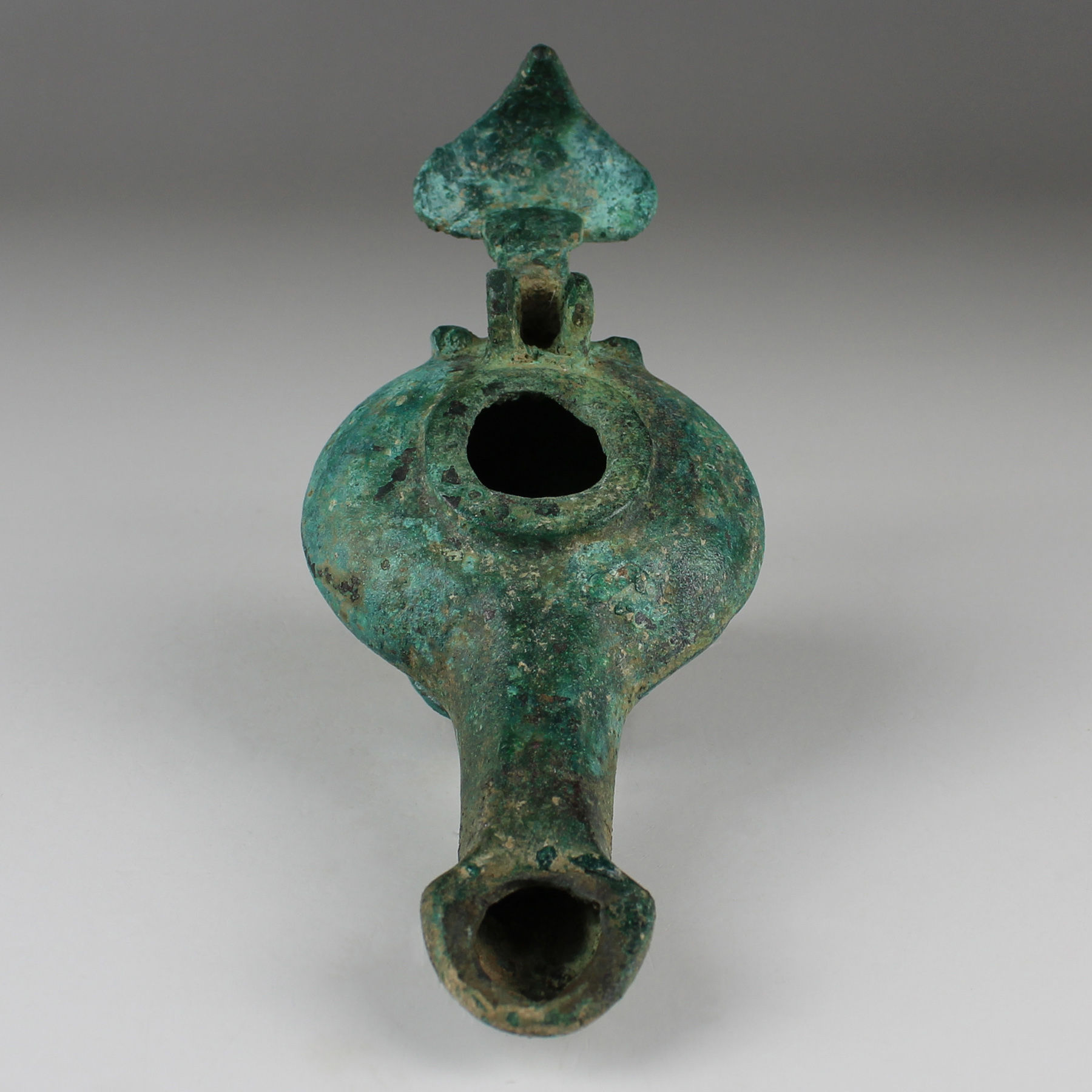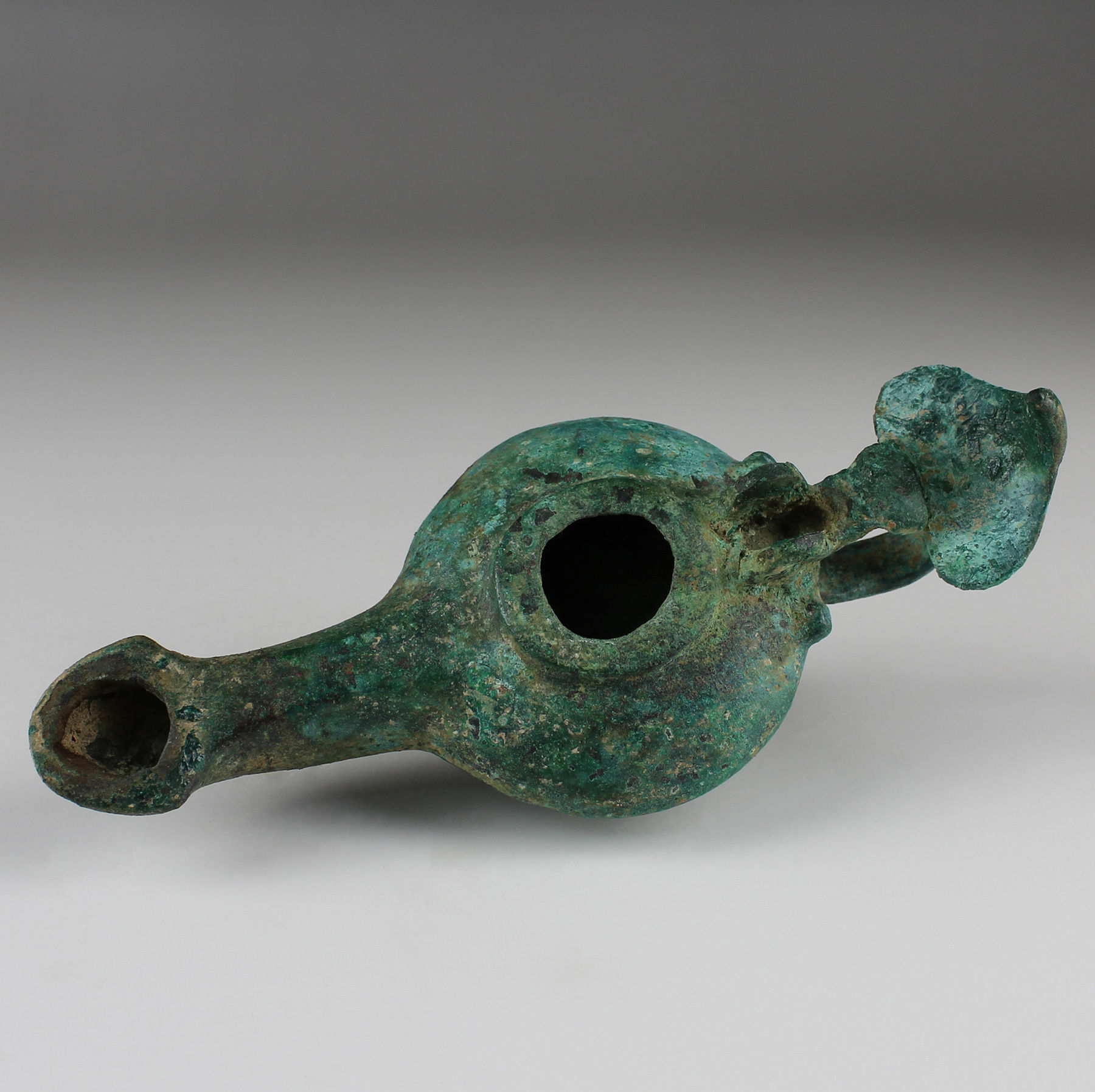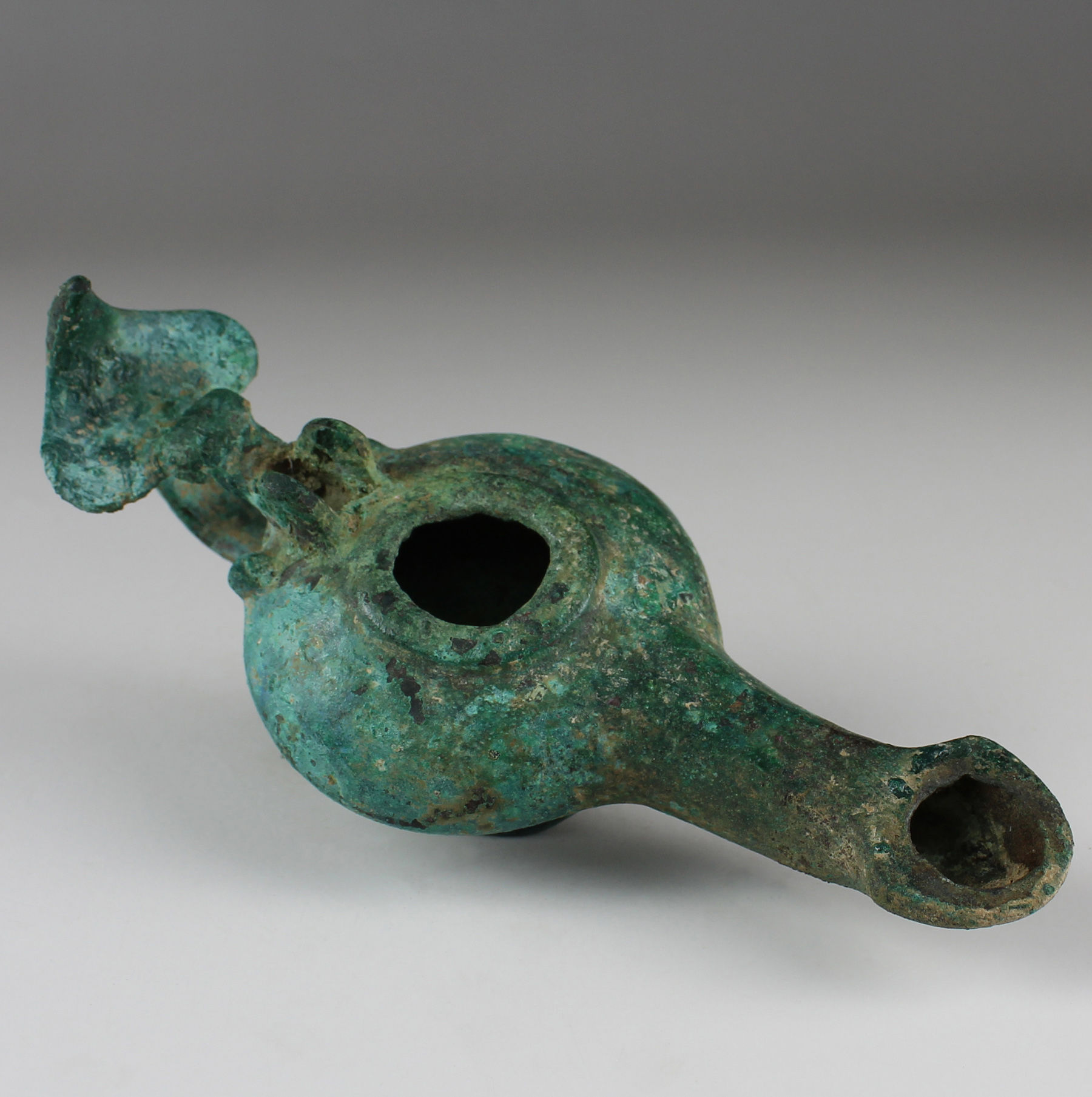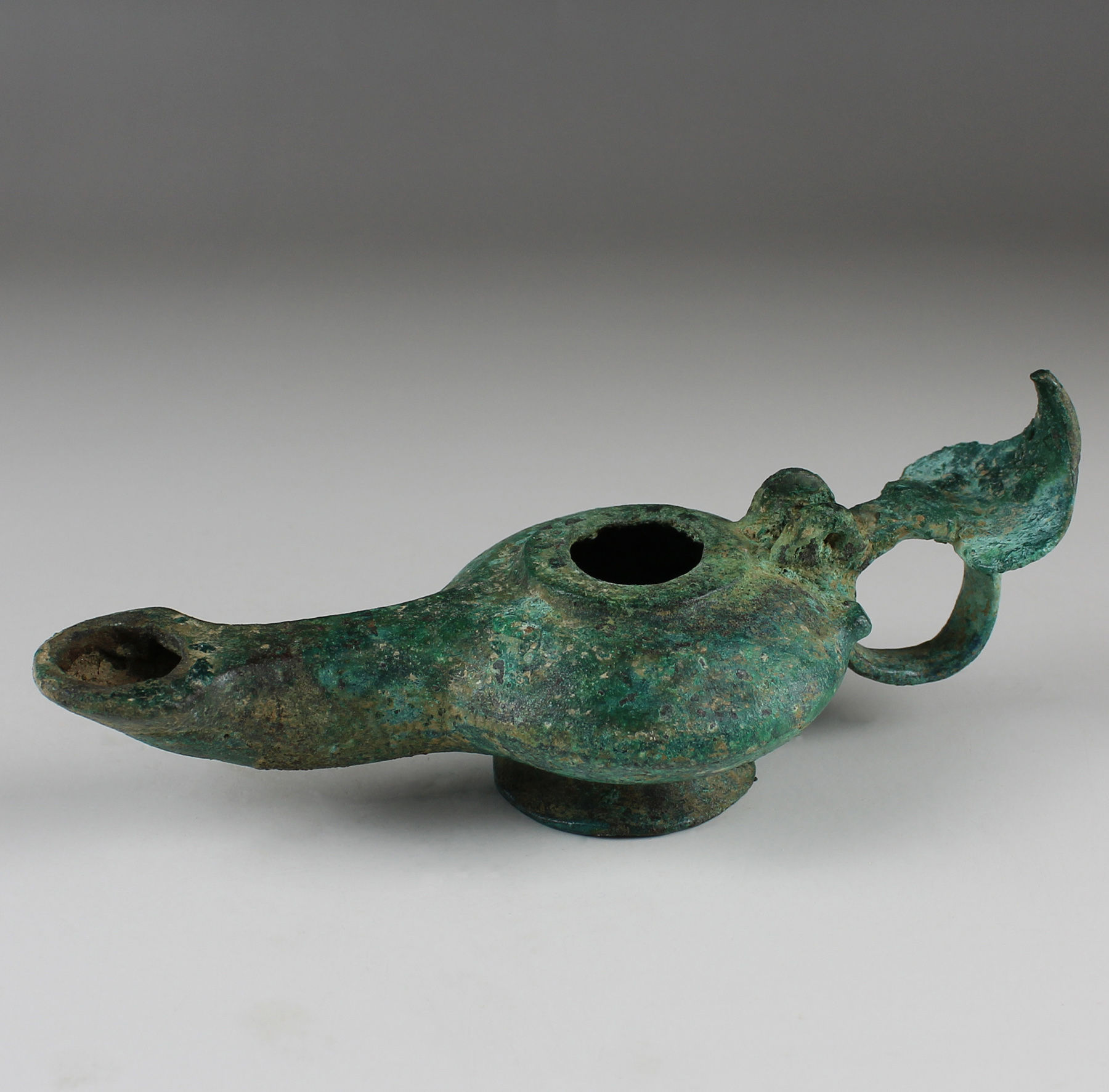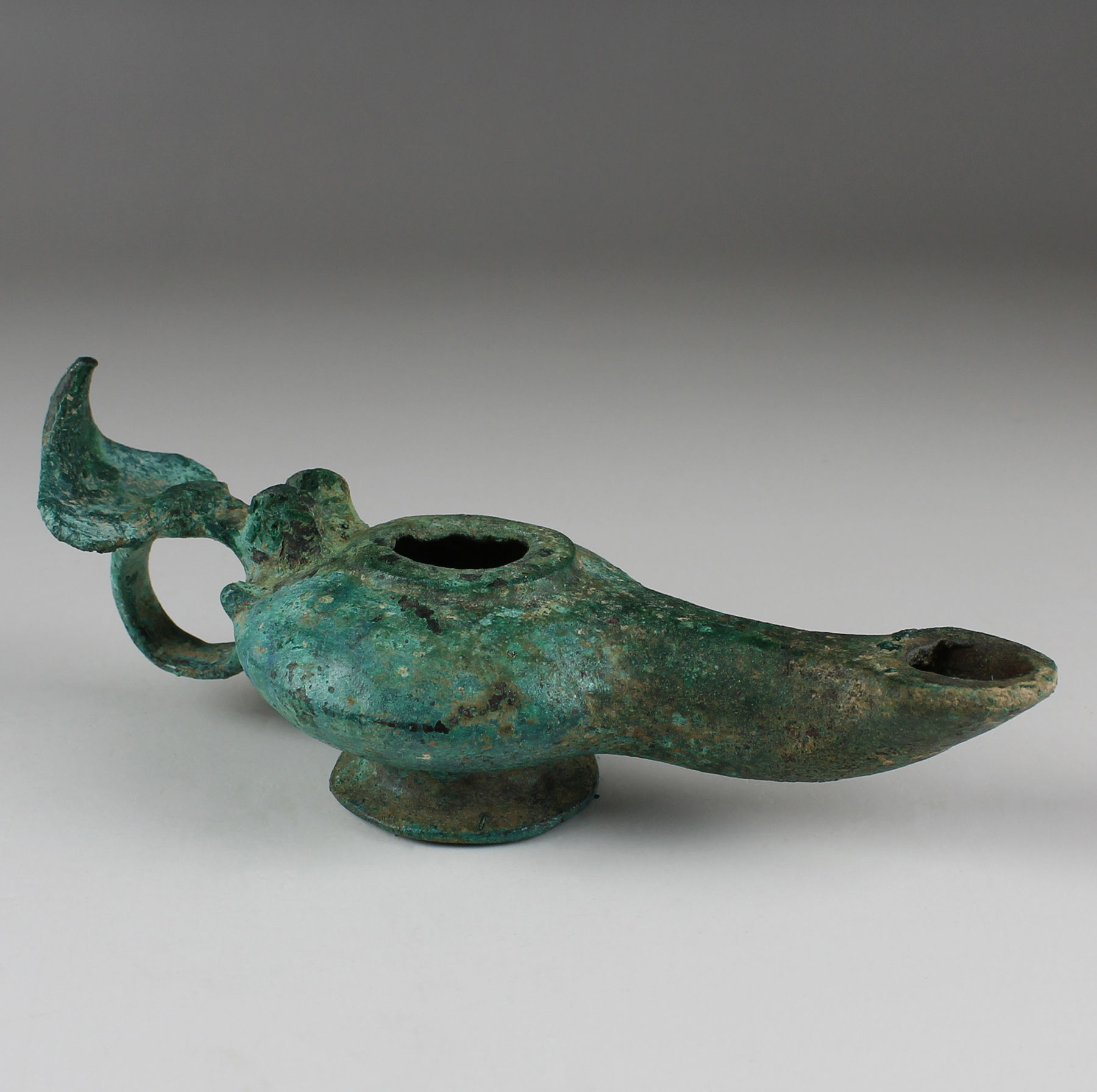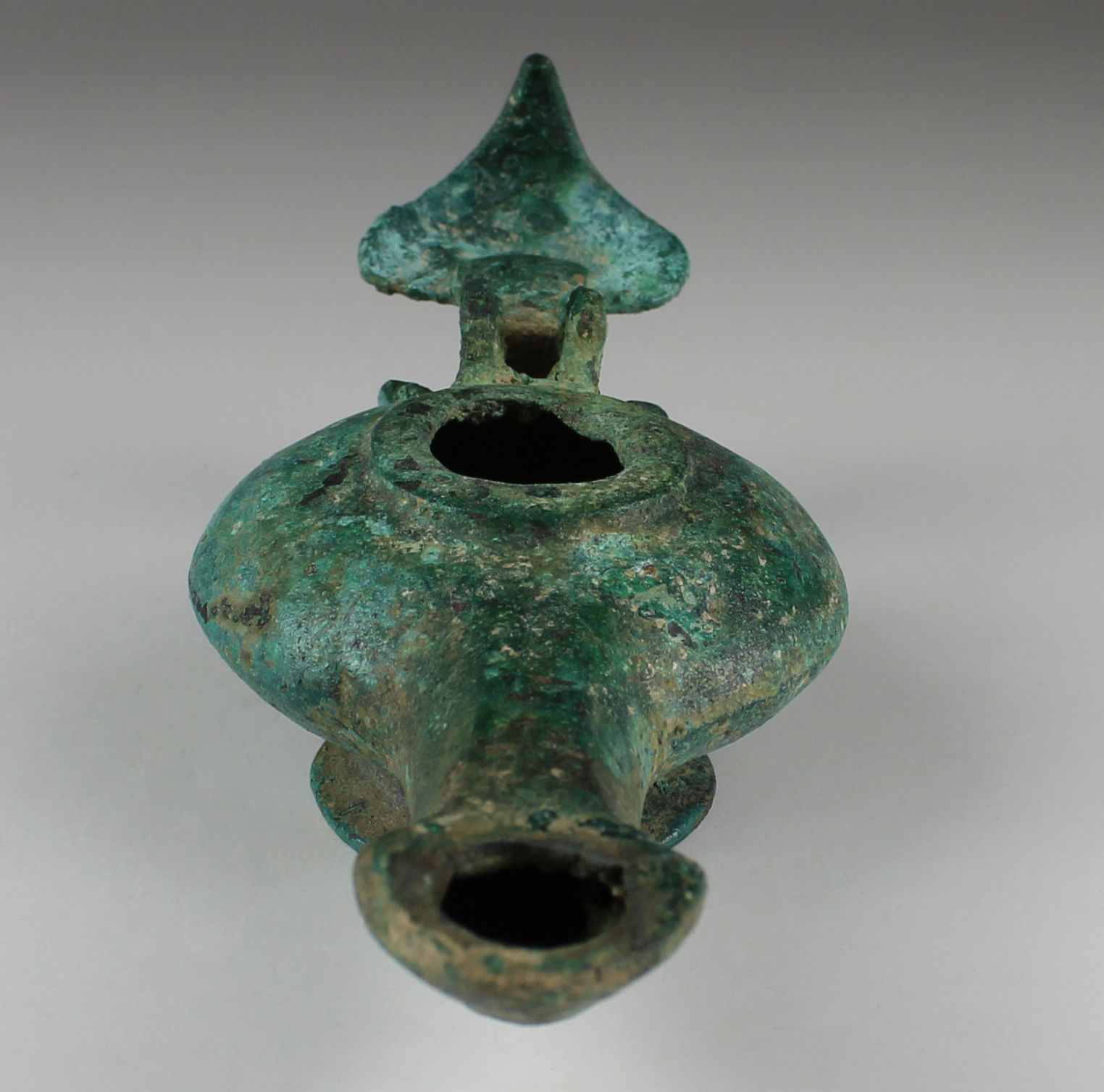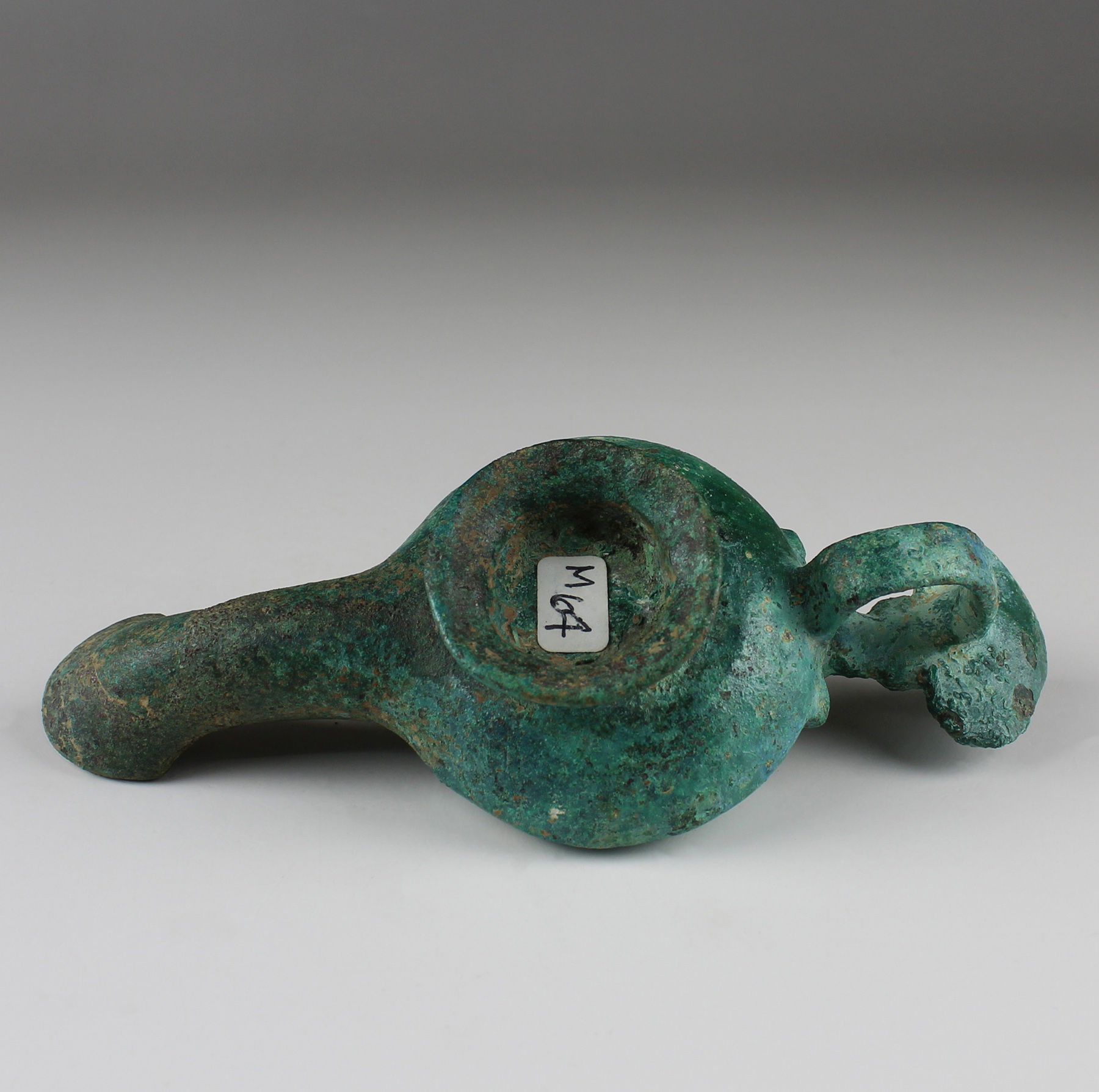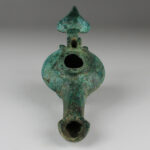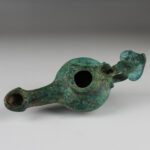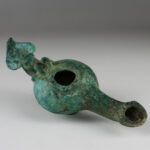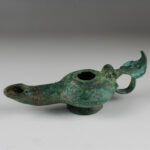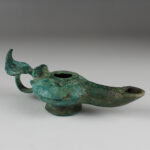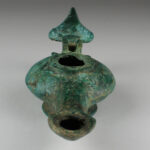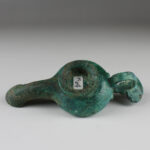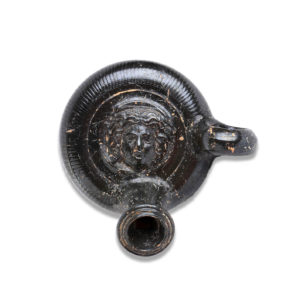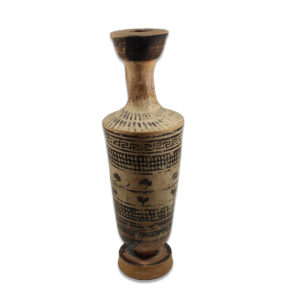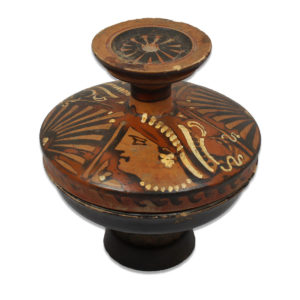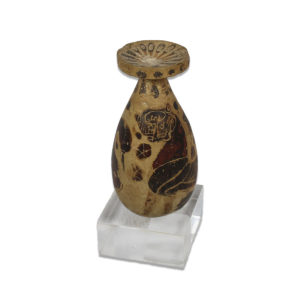Description
| ITEM | Oil lamp. The handle is in the shape of a leaf and the lid as a seashell |
| MATERIAL | Bronze |
| CULTURE | Greek, Hellenistic |
| PERIOD | 3rd – 2nd Century B.C |
| DIMENSIONS | 50 mm x 55 mm x 125 mm |
| CONDITION | Good condition |
| PROVENANCE | Ex Emeritus collection (USA), collected from the 1950’s to the 1980’s by a distinguished university professor who served as Department head, Dean and Vice President of a major university. |
Lamps were used by ancient people in a variety of ways, both indoors and outdoors. They served utilitarian, ritualistic, and symbolic purposes.
Business owners, such as innkeepers and barkeepers, used oil lamps to light their businesses as well as the streets nearby. Noblemen used lamps to light their paths when they or their guests were out after dark. Soldiers used them to light forts and military encampments. Fishermen are believed to have used lamps on their boats when going on nighttime fishing excursions, and when out to sea, galleys likely had oil lamps hanging at the stern to indicate their positions to one another.
In the entertainment sector, lamps were used to light venues for after-dark sporting events such as gladiator shows. They were also used for “special effects” at the theater to indicate when a scene was supposed to be set at night.
In religious contexts, oil lamps served the simple utilitarian function of lighting temples and shrines, and they served a number of ritualistic functions, as well. Many of the religious practices in ancient Rome involved some form of ritual sacrifice or offering. Because light was considered a blessing, oil lamps were frequently dedicated at temples and shrines as votive offerings. They were also a common component in burial practices, and lamps were often buried with the dead in order to light the way into the afterlife and beyond.
In some cases, oil lamps served as a status symbol. Wealthy families used and displayed lamps made of metal, a higher quality material, lamps with intricate or exotic imagery, and lamps with multiple nozzles which burned more fuel, making the lamp more costly.


